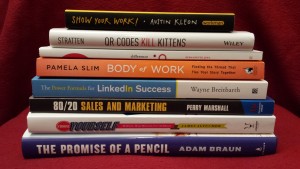 After reading so many wonderful books in 2013, I wasn’t sure how 2014 was going to be able to compete, but compete it did. 2014 provided a treasure trove of insight, information, and realizations. There are some stellar pieces of work out there.
After reading so many wonderful books in 2013, I wasn’t sure how 2014 was going to be able to compete, but compete it did. 2014 provided a treasure trove of insight, information, and realizations. There are some stellar pieces of work out there.
Inspiration and Creativity in Life and Business.
 After reading so many wonderful books in 2013, I wasn’t sure how 2014 was going to be able to compete, but compete it did. 2014 provided a treasure trove of insight, information, and realizations. There are some stellar pieces of work out there.
After reading so many wonderful books in 2013, I wasn’t sure how 2014 was going to be able to compete, but compete it did. 2014 provided a treasure trove of insight, information, and realizations. There are some stellar pieces of work out there.
 I went to visit some friends who work at AT&T at the very building where I started my career with the company, back when they were known as Ameritech. 10 days earlier some of my former colleagues celebrated their 20 year anniversary with the company.
I went to visit some friends who work at AT&T at the very building where I started my career with the company, back when they were known as Ameritech. 10 days earlier some of my former colleagues celebrated their 20 year anniversary with the company.
 In my last post I wrote about finding the motivation to learn something new. Once you have the motivation, how do you do actually go about learning?
In my last post I wrote about finding the motivation to learn something new. Once you have the motivation, how do you do actually go about learning?Writer, Marketer, Music lover. Seeker of inspiration and creativity. Fascinated with The Beatles.
Copyright © 2025 · eleven40 Child Theme on Genesis Framework · WordPress · Log in
Follow Me!